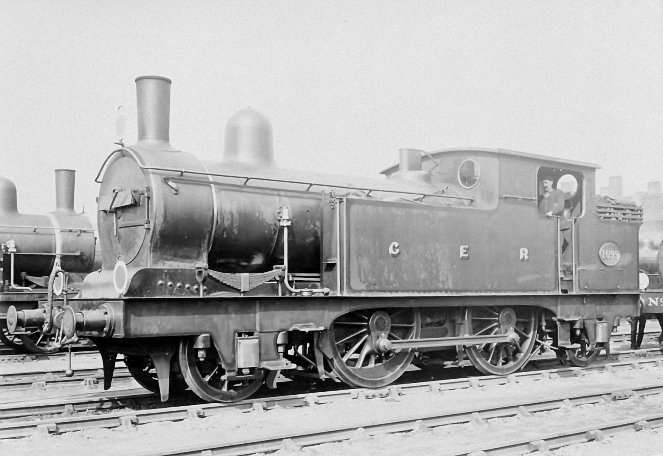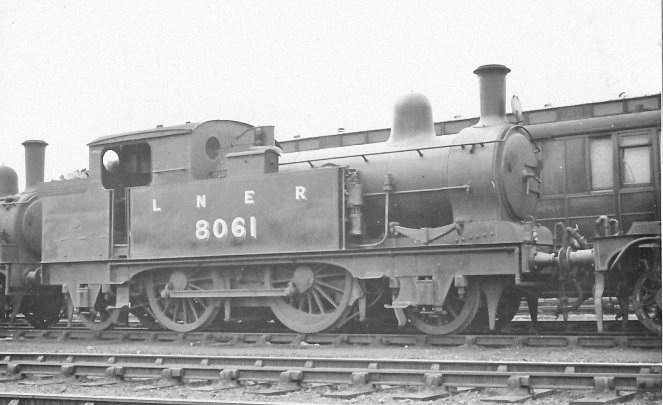C32 Class 2-4-2T 1893-1902
LNER Class F-3
1040-1049, 1060-1099
 GERS Collection 7002/12
GERS Collection 7002/12
In 1893 James Holden introduced the C32 class, a 2-4-2 tank engine version of the T26 class ‘Intermediate’ 2‑4-0s (q.v.). They had an impressive appearance, having a similar arrangement of double frames for the trailing axles at either end, the springs for the outside trailing axleboxes being housed in a ‘cupboard’ in the bunker sides above. There were however a few subtle differences from the T26s in that the leading axle was moved back three inches and the side-play of both carrying axles increased to one and a half inches. This enabled the engines to traverse smaller radius curves. The leading overhang remained the same, for the front end of the frames was also shortened by three inches so that the bunker could be as large as possible. These locomotives were intended for outer suburban work, for which some were equipped with condensing gear, and for longer-distance passenger and goods work on the main lines in the London area. A total of fifty were built, forty in 1893-5, and a further ten in 1902, which had higher pressure 160 lbs. psi boilers that later became standard on the class. There were some teething problems however. Not having the steadying influence of a tender at the rear, and with greater un-controlled side play in the outer axles, they tended to ‘hunt’. After various experiments, an arrangement of control springs was fitted to the outside axle boxes at either ends, and all engines quickly acquired reinforcing patches to the outside frames, which are clearly visible in this photograph of No. 1099. The last ten engines built in 1902 – Nos. 1040-1049 – had these features from new.
 GERS Collection 7005/225
GERS Collection 7005/225
Teething problems solved, the C32 class 2-4-2Ts settled down to an uneventful life. Under the LNER they became class F-3, by which time they were beginning to spread further afield on the GE system and they were not often to be seen in the London area after around 1927. As tank engines, they were not as versatile as their 2-4-0 counterparts due to their heavier weight and more-restricted route availability. Scrapping began in 1936 and was fairly ruthless, for thirteen were withdrawn before the outbreak of the Second World War. The total of 37 remaining engines remained constant until 1947, when no less than 22 were scrapped, leaving fifteen to become BR property the following year. Only three survived long enough to acquire BR numbers. By the end of 1950 only one engine was still in stock, but managed to hang on until it was withdrawn in April 1953. The photograph shows No. 8061 (ex-1061) in the mid-1930s, having acquired most of the LNER-period modifications to the coal rails, chimney, cab roof and fitting of a vacuum ejector. However, it still retains Ramsbottom safety valves on the boiler.
